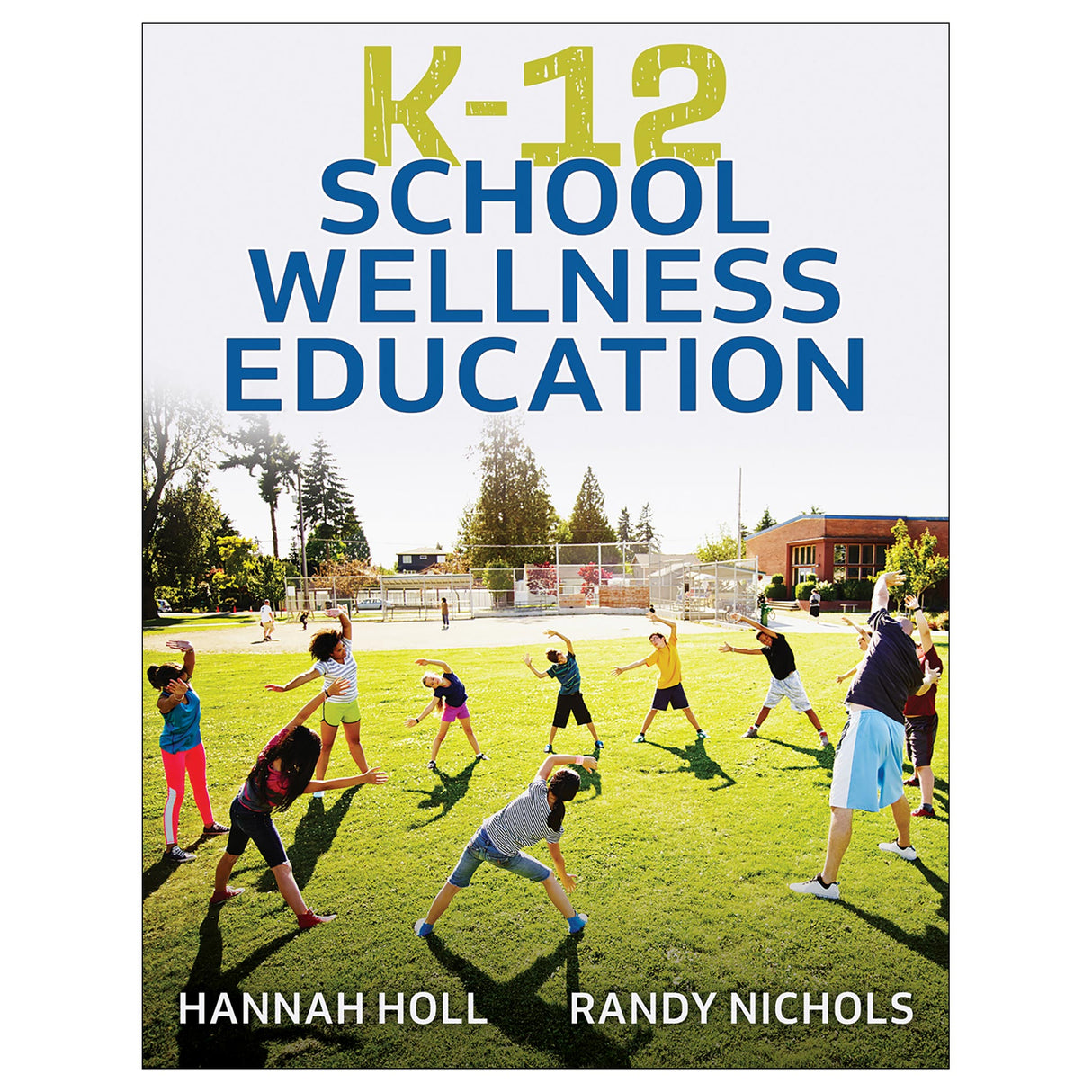K-12 School Wellness Education epub
Author: Hannah Holl, Randy Nichols
$89.95 CAD
Access Duration: 10 Years
Authors Hannah Holl and Randy Nichols, the educators who developed the SWE model, have based K-12 School Wellness Education on the Whole School, Whole Community, Whole Child (WSCC) model and aligned the content with SHAPE America’s most recent National Physical Education Standards.
The text incorporates traditional areas of games, sports, and fitness performance and, more importantly, focuses on why physical activity matters. Units are not based on games or fitness activities but are instead focused on the National Physical Education Standards and the five components of Living Well: nutrition, social and emotional wellness, the human body and responses to physical activity, health-related fitness, and injury prevention and safety.
The Living Well focus helps elementary, middle school, and high school students progress along their physical literacy journey and health literacy journey. It demonstrates for students how a physically active lifestyle is associated with wellness, disease prevention, and an overall improved quality of life.
K-12 School Wellness Education offers physical education teacher education (PETE) students and in-service teachers the following:
- Information on how SWE (and its related evidence-based research) differs from other models
- Curriculum development tools such as templates for unit plans, unit storyboards, and lesson plans
- K-12 grade-level benchmarks to measure student progress on their physical and health literacy journeys
- Over 30 success stories and leadership examples to guide strategies for collaboration, garner administrative support, and create a culture of wellness in schools
- Special features such as learning objectives, key term lists, sidebars, and chapter wrap-up sections to support reader comprehension
Audience
Undergraduate text for physical education teacher education (PETE) students; resource for health education teacher education (HETE) students, in-service K-12 health or physical education teachers, administrators, and curriculum directors.Lead With Why
Acknowledge the Current State of Well-Being in Society
Shift to Individualized Education and Learning
Provide Something Needed by Society
Become an Effective School Wellness Educator
Chapter 2. School Wellness Education Model
Whole School
Living Well
Self-Empowerment
Chapter 3. Unit Planning
Create a Program Goal Statement
Utilize a Backward Design Approach
Plan the Unit Storyboard
Chapter 4. Lesson Planning
Part 1: Establish the Lesson Goal Statement and Scope
Part 2: Plan the Resources, Steps and Sequences, and Assessment
Part 3: Design the Living Well Moment
Part 4: Plan the Physical Activity Education Delivery
Part 5: Set the Closure and Assessment Components
Chapter 5. School Wellness Education at the Elementary Level
Whole School Connections
Living Well Focus
Self-Empowerment Strategies
Lesson Planning
Chapter 6. School Wellness Education at the Middle School Level
Whole School Connections
Living Well Focus
Self-Empowerment Strategies
Lesson Planning
Chapter 7. School Wellness Education at the High School Level
Whole School Connections
Living Well Focus
Self-Empowerment Strategies
Lesson Planning
Chapter 8. Creating a Well Future
Patricia Kardambikis, PhD
The Administrator’s Role in School Wellness Education
Strategies for Creating School Wellness Policies and Programs
School Wellness Committee
Leadership and Controversy
Case Studies
Chapter 9. School Wellness Education Success Stories
Chapter 10. School Wellness Education Leadership and Partnerships
Appendix A. The Five Components of Living Well by Grade Level
Appendix B. Unit Storyboards
What is the School Wellness Education model?
What’s it like to use the School Wellness Education model with Grades 5 and 6?
All ancillaries are free to adopting instructors through HKPropel.
Instructor guide. Includes objectives, lecture ideas, active class learning activities, and project ideas.
Test package. Contains 250 questions in true-false, fill-in-the-blank, essay and short-answer, and multiple-choice formats. The files may be downloaded for integration with a learning management system or printed for use as paper-based tests.
Chapter quizzes. Contains ready-made quizzes (9-10 questions each) to assess student comprehension of the most important concepts in each chapter.
Presentation package. Features more than 210 PowerPoint slides of text, artwork, and tables from the book that can be used for class discussion and presentation. The slides in the presentation package can be used directly within PowerPoint or printed to make handouts for students. Instructors can easily add, modify, and rearrange the order of the slides.





